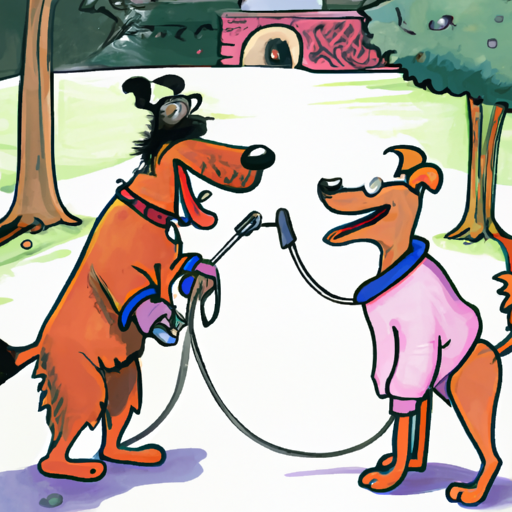Preparing for the Introduction
Your role as a caregiver is to create a safe and comfortable environment for the dogs. The first meeting can be stressful, but with proper preparation, it can be a smooth experience.
- Know their personalities: Understand the individual personalities of your dogs. Is one shy? Is the other playful? Knowing this will help you anticipate how they might react during the meeting.
- Choose a neutral location: This reduces territorial aggression. Avoid places where one dog might feel possessive or territorial.
The First Meeting
This is the moment of truth. The goal is to have a calm and controlled introduction.
- Keep them on leash: This gives you control over the situation.
- Allow sniffing: This is how dogs gather information about each other.
- Positive reinforcement: Reward good behavior with treats and praises.
Monitoring Body Language
Being able to interpret your dogs’ body language can help prevent conflicts. Here’s a simple table to help you understand:
| Body Language | Possible Meaning |
|---|---|
| Raised hackles | Nervous or aggressive |
| Wagging tail | Excited or anxious |
| Licking lips, yawning | Nervous or stressed |
Building their Relationship
After the first meeting, it’s your job to help them build a positive relationship.
- Let them spend time together: Supervised playtime is a great way to help them bond.
- Feed them separately: This can help prevent resource guarding.
- Give them their own space: Each dog should have their own bed and toys.
Dealing with Conflicts
Even with careful planning, conflicts can happen. It’s important to know how to de-escalate the situation.
- Don’t panic: Your anxiety can affect your dogs.
- Use distractions: A loud noise or a toy can divert their attention.
- Separate them if necessary: If the conflict escalates, separate them immediately.
Frequently Asked Questions
Q: How long does it take for dogs to get used to each other?
A: It depends on the dogs. It can take anywhere from a few days to a few weeks.
Q: What should I do if one dog is aggressive?
A: Consult a professional dog trainer or behaviorist. They can provide advice tailored to your situation.
Q: Can I leave the dogs alone together?
A: Not until they’re comfortable with each other. Always supervise their interactions at first.
Remember, patience is key in this process. With the right approach, your dogs can form a happy and harmonious relationship.



